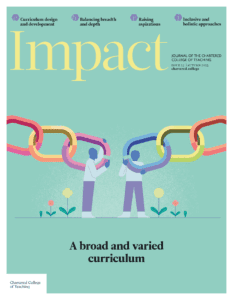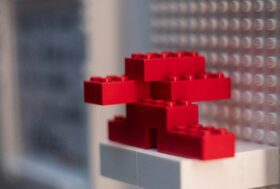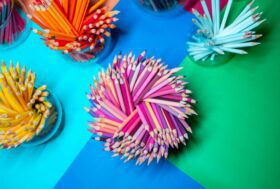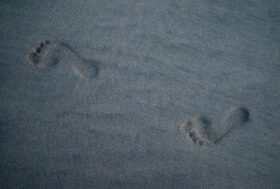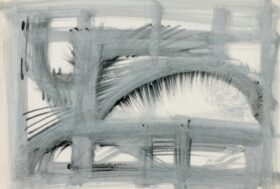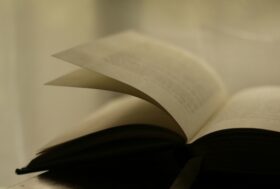Indigenous modes of learning in education: Developing alternative pedagogies in extended learning

KHADEEJA BATOOL, CENTRAL SCHOOL INTERNATIONAL, LAHORE, PAKISTAN
Central School International (CSI) in Lahore, is a newly established, research-driven institution, launched in August 2023 to explore innovative responses to urgent educational challenges in Pakistan. A key concern was the deep learning and developmental gaps that emerged following COVID-19: not only cognitive delays but also striking disruptions in sensory development (Yu and Xu, 2023) – particularly in proprioception, interoception and the vestibular system, which are essential to students’ sense of balance, emotional regulation and physical grounding (Kolb and Kolb, 2018; Bergsteiner and Avery, 2014).
While working in and out of schools in Lahore since the pandemic hit, the academic teams in three target schools observed alarming changes in the student bodies. Students appeared increasingly disoriented in both physical and sociological contexts. Many had limited awareness of their bodies and environments, a detachment that extended even to students not immersed in technology. This appeared to correlate with research on the massive impact that the pandemic had on mothers, newborns and children (Moyer, 2022). These observations underscored the need for a learning model that restored connection – to the body and the community – and which could do more to encourage deeper learning than the limits of a curriculum.
In response to these challenges, CSI launched the Extended Learning Programme (ELP), grounded in experiential and significant learning theory. The programme is based on David Kolb’s experiential learning cycle, which promotes iterative cycles of experience, reflection, conceptualisation and experimentation (Kolb and Kolb, 2018; Vince, 1998), and Lee Dee Fink’s taxonomy of significant learning, which provides a multi-dimensional model emphasising foundational knowledge, application, integration and human-centred growth (Fink, 2003a, 2003b). Kolb’s model presents a cyclical process for perceiving experience, reflecting, analysing and improving upon it, thereby grounding participants in their sensory and emotional experience of the world and engaging both affect and cognition when responding to it. Combining this with Fink’s model, which focuses on developing transformative learning, can encourage deeper learning that truly changes students – in behaviour, mindset and understanding.
The ELP aligns with Indigenous knowledge systems – particularly those of the Blackfoot tribe – where learning is seen as relational, situated and deeply embedded in cultural and ecological contexts (Battiste, 2013). The programme aims to foster cultural prosperity and collective wellbeing, emphasising not only personal growth but also how knowledge benefits the community and environment. We began by formalising eight extracurricular clubs into structured learning environments: media and broadcasting, music, green ambassadors, culinary arts, football, basketball, martial arts and gymnastics. During the August to December 2023 pilot, students were grouped across year levels to engage in two clubs, while coaches followed traditional teaching methods.
This pilot phase functioned as a field study. Lessons were observed, lesson plans reviewed and informal student voice captured. One particularly illuminating exchange occurred with a Grade 3 student who expressed dissatisfaction with his club – not due to its nature, but due to the absence of sustained challenge. This moment validated the core insight of experiential learning theory: students need just-right levels of challenge in order to remain engaged (Tomkins and Ulus, 2016). The three-phase ELP framework – exploration (Years 1–5), specialisation (Years 6–8) and implementation (O- and A-levels) – was already conceptualised, but the pilot testing helped us to understand what real-world adjustments were needed in curriculum and professional development to adapt it to our context.
In the second term, I was able to design curricula for all the clubs that repackaged their original content into task- and game-based activities. These activities would explicitly create avenues for connection with students’ senses, emotional states and reflective practices. In the coming term, this custom-made curriculum will be implemented after training the coaches thoroughly and trialling lesson plans in advance, to orient them towards the specific interventions being added to promote sensory and emotional development. These interventions are designed to ground students in their local context using local Indigenous knowledge, including and extending beyond languages, oral storytelling methods, traditional sports, native flora and fauna, and native musical practices. The central idea is to build concentric circles of knowledge for students to interact with, beginning with what is immediately around them, drawing towards what is in the world at large, and allowing both interactions to create moments of reflection for students to understand what is inside of them.
The three-phase learning journey begins with Years 1–5, wherein students consolidate their knowledge of their immediate world. In the second phase, lasting through Years 6–8, they explore international connections and understand how their internal world interacts with the external world. Finally, the third phase, during students’ O- and A-levels, focuses on the furthest circle: action and application in the world at large, through capstone projects and social interventions. At the time of writing, students are engaged in the first phase, with the second phase (specialisation) set to begin later in 2025. In the next term, the programme will consolidate its spread-out interventions and begin its second iterative cycle, with data from this phase informing its continued evolution.
Kolb’s experiential learning cycle provides the philosophical and pedagogical foundation for the ELP. The model supports personalised learning through structured engagement, reflection, abstraction and application (Kolb and Kolb, 2018). The strength of Kolb’s model lies in its adaptability across contexts, enabling us to tailor experiences to the diverse learning stylesTheories relating to the idea that individuals learn best in different ways and teaching should be tailored to their learning styles – these have been widely debunked by research and developmental needs of our students (Bergsteiner and Avery, 2014). Simultaneously, Fink’s model (2003a, 2003b) helps to operationalise that learning. Each club’s curriculum was designed around Fink’s six dimensions (foundational knowledge, application, integration, human dimension, caring and learning how to learn), ensuring the inclusionAn approach where a school aims to ensure that all children are educated together, with support for those who require it to access the full curriculum and contribute to and participate in all aspects of school life of emotion, integration and lifelong learning strategies. While each stage of the ELP emphasises different dimensions, all are present throughout, reinforcing the significance of the learning experience.
A key feature of the ELP is its commitment to developing students’ reflective capacity and metacognitive awareness. Students are encouraged to engage in structured reflections at every stage of the programme, from initial task engagement to final evaluations. These exercises support students in identifying their preferred learning strategies, emotional triggers and areas for growth – skills that align with Fink’s emphasis on ‘learning how to learn’ (Fink, 2003a). Importantly, this reflection is socially mediated. Group discussions, collaborative feedback sessions and shared project critiques help students to learn through others, and not just about themselves. This echoes the relational knowledge-building seen in Indigenous traditions and community-based learning (Battiste, 2013).
In her book, Battiste (2013) expands on how indigenous knowledge is deeply connected to all aspects of life – the land, community, ancestors, spirituality and living beings – and learning is about understanding these relationships. It prioritises the integration of mind, body, spirit and emotion in the learning process, through lived experience, intuition and ethical engagement, and is often co-constructed and shared within the community through storytelling, ceremonies, observation and direct experience as a collective endeavour. This process requires the presence of respectful relationships between learners, teachers (often Elders), the environment and the knowledge itself, because learning is often practical and hands-on, rooted in the specific contexts and needs of the community. The ELP embeds this larger Indigenous approach to learning within Eurocentric frameworks, to create a new pathway that serves the needs of the next generations, who are globally aligned and locally grounded.
Student engagement and insight have been remarkably high, even in the initial phase. Children showed increasing self-awareness and began offering feedback rooted in reflection, rather than just preference. Several students exceeded expectations in performance-based assessments – a student in Grade 5, for instance, presented a jaggery and date cake in culinary arts, explaining not only the health rationale but its cultural significance and familial value. At just 10 years old, he demonstrated emotional intelligence, historical awareness and scientific reasoning – all in a single project.
We’ve observed improved student grounding, greater emotional articulation and a stronger desire for community connection in reflective exercises over the course of the year. The reflective methodologies have also undergone an iteration, now moving away from direct questioning methods (the Hawthorne effect was observed) and instead utilising colour/image association exercises and factual recall to facilitate expression. This has already resulted in more honest qualitative datasets and has also led to the conclusion that the programme requires a larger database capable of tracking and interpreting anecdotal data, the development of which is in process.
Implementing a paradigm-shifting programme within a new institution came with significant challenges. Resource constraints, varying coach capacities and the inertia of traditional education posed hurdles. Assessment models required rethinking – how could we meaningfully measure learning that was interdisciplinary, emotional and embodied? The challenges that we documented reinforced the need for a flexible, living curriculum, even in the light of data received from the academic team – one that responds dynamically to student needs and contextual feedback. The pilot confirmed that while the framework is essential, it must remain fluid enough to adapt to the social-emotional climate of the classroom and community.
The lessons learned from CSI’s ELP are valuable beyond our local context. The integration of Kolb and Fink’s models with Indigenous philosophies, reflective practice and multi-sensory engagement offers a transferable framework for any school seeking to ground learning in context, community and care. What is critical is a willingness to begin with observation, honour student voice and allow the curriculum to grow as an organic response to real people in real places. At its heart, the ELP is a call to honour Indigenous modes of learning that are connected, responsive and transformational. As we enter the second cycle of implementation, we remain committed to reflection, iteration and grounding.
- Battiste M (2013) Decolonizing Education: Nourishing the Learning Spirit. Saskatoon: Purich Publishing.
- Bergsteiner H and Avery GC (2014) The twin-cycle experiential learning model: Reconceptualising Kolb’s theory. Studies in Continuing Education 36(3): 257–274.
- Fink LD (2003a) A self-directed guide to designing courses for significant learning. University of Oklahoma. Available at: www.bu.edu/sph/files/2014/03/www.deefinkandassociates.com_GuidetoCourseDesignAug05.pdf (accessed 25 July 2025).
- Fink LD (2003b) What is ‘significant learning’? University of Oklahoma Significant Learning Website. Available at: www.wcu.edu/WebFiles/PDFs/facultycenter_SignificantLearning.pdf (accessed 25 July 2025).
- Kolb AY and Kolb DA (2018) Eight important things to know about the experiential learning cycle. Australian Educational Leader 40(3): 8–14.
- Moyer MW (2022) The COVID generation: How is the pandemic affecting kids’ brains? Nature, 12 January, 22. Available at: www.nature.com/articles/d41586-022-00027-4 (accessed 25 July 2025).
- Tomkins L and Ulus E (2016) ‘Oh, was that “experiential learning”?!’ Spaces, synergies and surprises with Kolb’s learning cycle. Management Learning 47(2): 158–178.
- Vince R (1998) Behind and beyond Kolb’s learning cycle. Journal of Management Education 22(3): 304–319.
- Yu X and Xu X (2023) Potential effects of the COVID-19 pandemic on the developing brain. Neuroscience Bulletin 39: 343–347.
